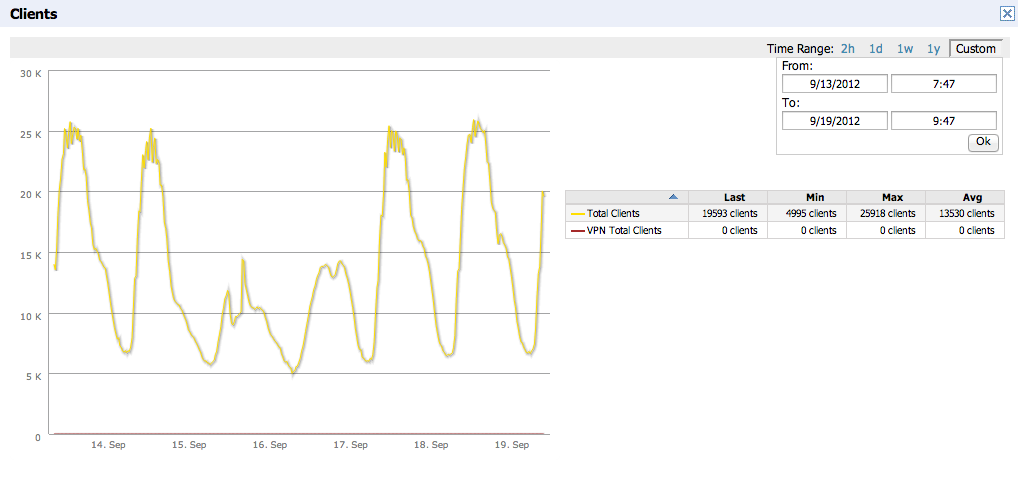When a user has difficulty connecting to OSU’s wireless network, it is not uncommon to hear them say:
“But the wireless works just fine at my house!”
Let me share why this is just a silly comparison . . .
The typical Wi-Fi enabled American home has 1 access point.
OSU currently has more than 8,300 access points.
Most homes have a few laptops, phones, a tablet or two, a smart TV, and maybe even a Wi-Fi enabled toaster. So, lets say an average of 10 devices simultaneously using Wi-Fi.
OSU simultaneously services more than 41,000 devices.

Wait . . . I have more!

Looking at just our secure “osuwireless” network, we serviced over 200,000 unique devices in a single week!
And in the same week, we saw over 4 million authentications a day!

So, does size matter? Well, when it comes to designing and supporting Wi-Fi networks, “yes”.
Definitely “yes”.
You can understand that with a network of this size, there are inherent complexities. The biggest challenge engineers like myself have is to eliminate as much complexity and provide as simple and secure of a network as possible. We want the service to function and be as easy to use as the Wi-Fi network in your home. Because at the end of the day, users do not (and should not) care about the inner-workings of the network. The thing just better work!



